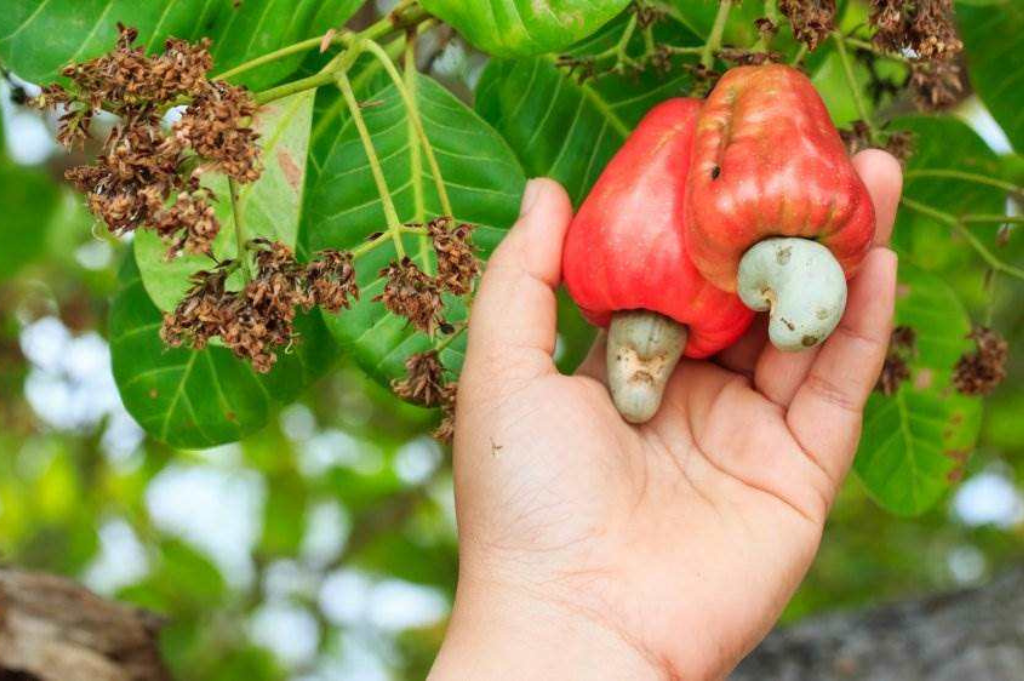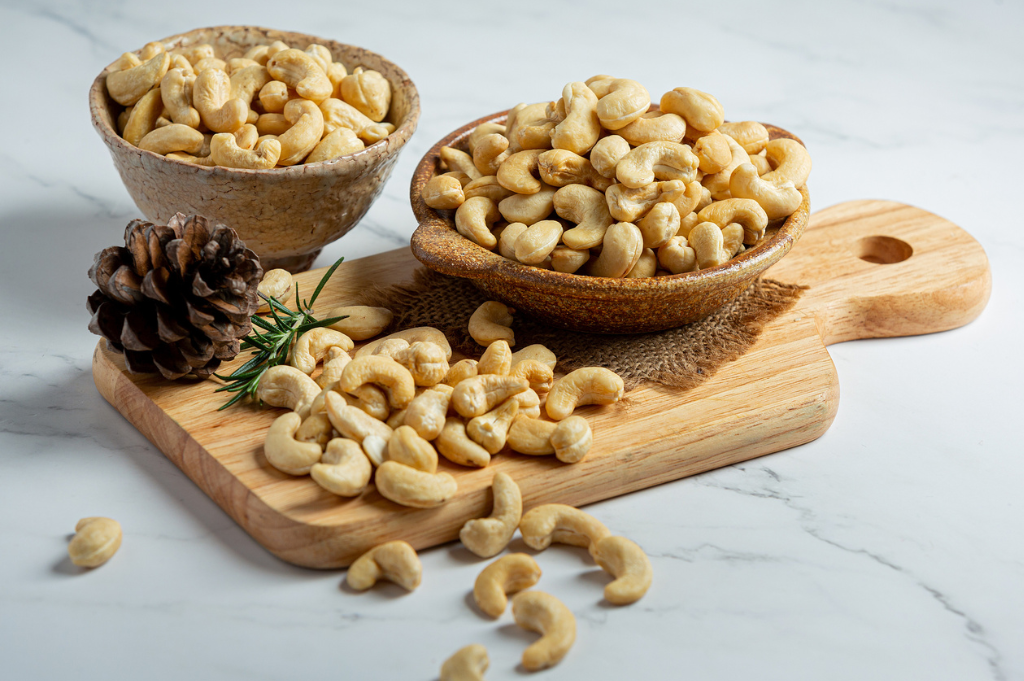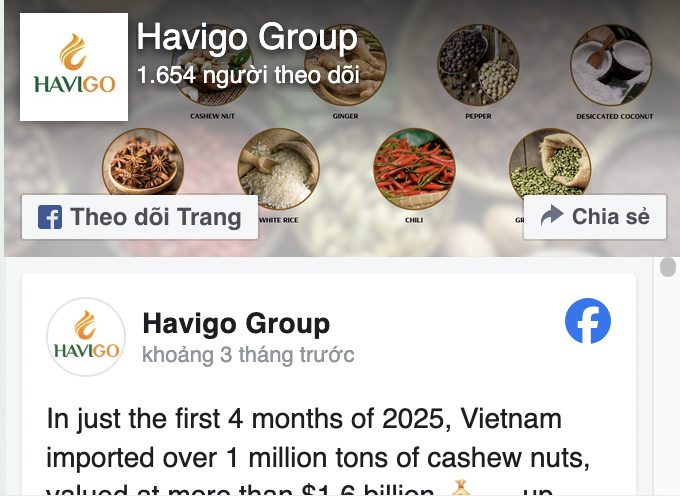In the global spice trade, bulk packaging for cassia export is a vital link in ensuring that the product arrives in excellent condition while complying with international shipping regulations. Exporters in cassia-producing nations such as Vietnam have developed specialized methods for bulk packaging that balance cost, protection, ventilation, and presentation.
Cassia packaging by woven polypropylene bags
Exporters often pack broken quills, bark chips, and lower-grade cassia in woven polypropylene (PP) bags. These bags are strong, lightweight, and breathable, which helps prevent moisture buildup. A typical PP bag can hold between 25 and 50 kilograms of cassia. Most exporters also stitch the bags securely to prevent leakage.
For added protection, some suppliers include polyethylene liners. These liners are especially useful in humid regions or when shipping over long distances by sea.
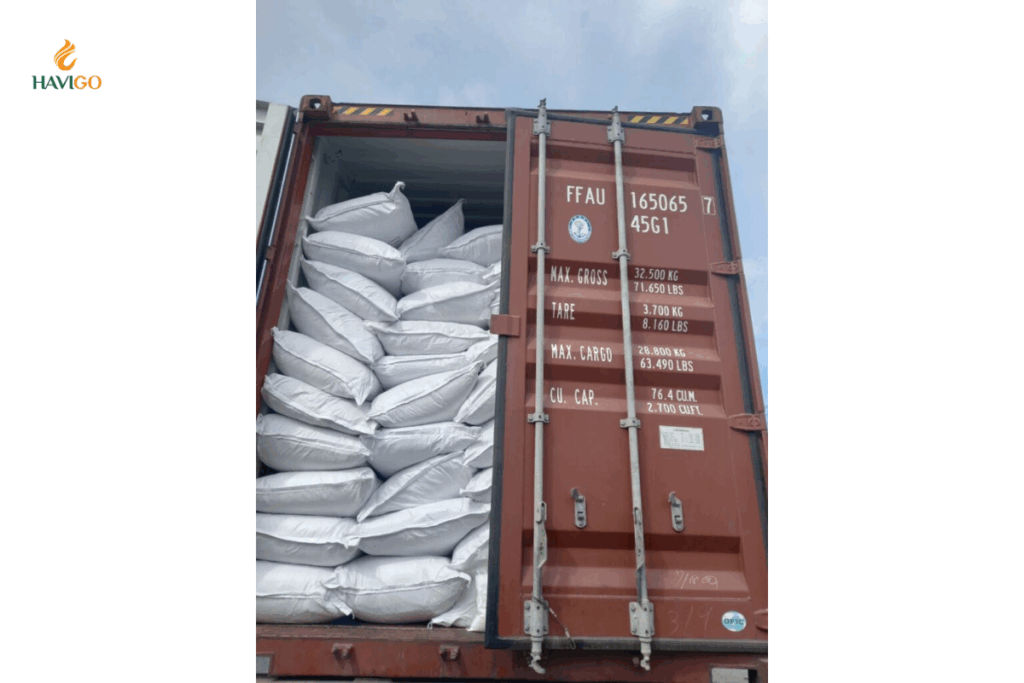
Cassia packaging by corrugated cardboard boxes
For high-end markets and premium cassia, exporters prefer corrugated cardboard boxes because these boxes work well for whole quills, longer bark rolls, and cut segments that must stay intact. Furthermore, multi-layer boxes lined with food-safe paper provide extra protection.
Cardboard boxes offer several advantages:
- Protect cassia from crushing and contamination
- Stack easily in containers or on pallets
- Provide space for printed labels and barcodes
- Improve product presentation during inspections
Vietnamese exporters use cardboard boxes to preserve cassia’s appearance. A standard box holds 10–20 kilograms and often includes branding and batch details for traceability.
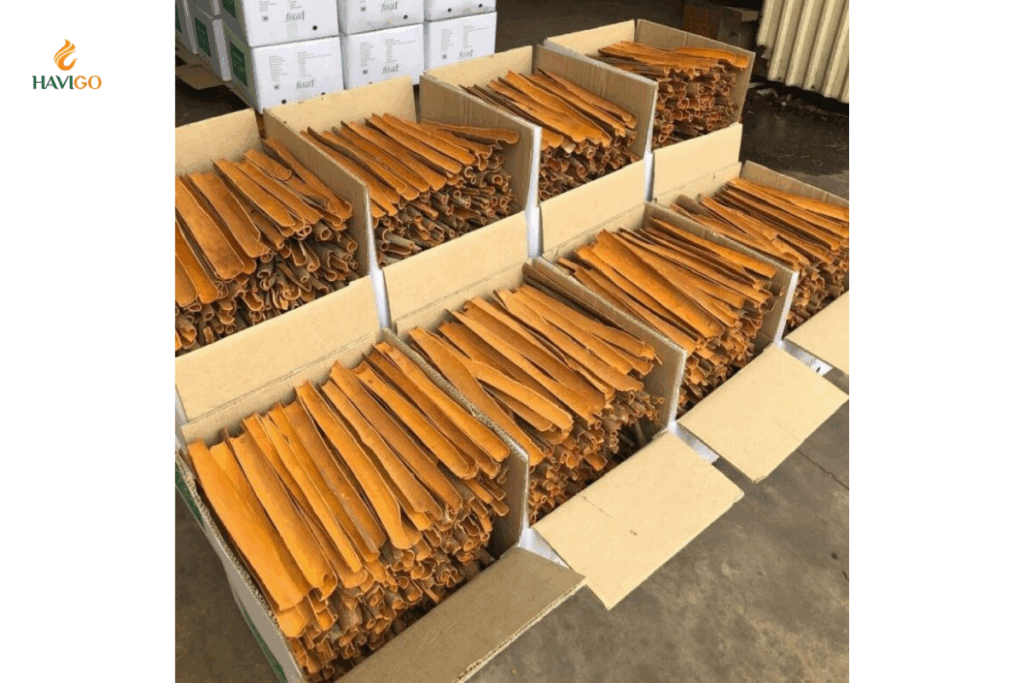
Cassia packaging by vacuum-sealed bulk packs
Vacuum-sealing is rare but growing in popularity, especially for premium cassia varieties like Saigon cinnamon. By removing oxygen, this method slows down microbial growth and protects essential oils.
Vacuum-packed cassia stays fresher for longer, making it ideal for long-term storage and international distribution. However, the cost is higher, so this method is used selectively.
Palletization and container loading
After packaging, cassia products are loaded onto fumigated wooden pallets or plastic crates. Exporters shrink-wrap the pallets for added stability. During containerization, they follow strict loading practices to reduce damage and moisture risks.
Exporters often include:
- Desiccant packs to absorb humidity
- Container liners to protect against water damage
- Pallet straps to secure cargo
Labeling and Documentation
Clear and accurate labels are essential for bulk exports. Therefore, each package includes information such as:
- Product type (e.g., Cassia BQ 2″)
- Grade and moisture level
- Net and gross weight
- Harvest and packing dates
- Origin and exporter details
Proper labeling makes customs processing easier, and it also allows buyers to track product quality and origin with confidence.

Stay Connected with Havigo Vietnam
Havigo Company Limited is active in the agricultural export sector, and we aim to bring high-quality Vietnamese agricultural products, including spices, rice, beans, and fruits, to the global market. We supply you with high-quality products at competitive prices. If you are interested in importing Cassia from Vietnam, please contact us via WhatsApp: +84 886970996 for excellent support.
We are confident in our ability to consistently deliver in a way that meets the highest quality standards while offering competitive pricing within the market.
For more information about our products, please visit our LinkedIn



